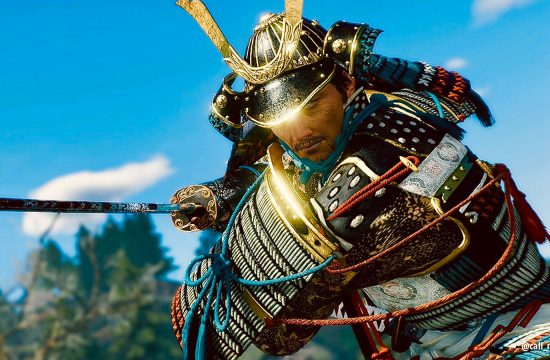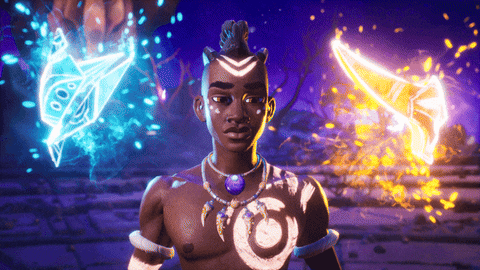You find yourself all alone on an alien planet, nothing ahead of you except filthy worshippers of the evil Chaos Gods. That would usually be fine, as you are a Space Wolf; a son of Russ, bred specifically for battle and ready to die for your cause. But this time, there are a lot of enemies, and your mission is to search for an ancient relic, so death would be in vain. Can you hold off the opposing Word Bearers long enough for your battle brothers to reinforce your position? Only time will tell…
Warhammer 40,000: Space Wolf finally landed on Switch this week after initially launching on Apple phones back in 2014, Android in 2015, and on PC in 2017. So, how does a six-year-old mobile game hold up now it has touched down on the Nintendo Switch? Not too well, to be honest. The game is a complicated mash-up of X-Com-esque turn-based tactical gameplay and a collectable card game and deck builder. However, neither of these ideas come across too well on the Switch.
The turn-based tactics draw immediate comparisons to X-Com, or, for Switch users, Mario + Rabbids Kingdom Battle. While the latter of these games proves that this genre works well on Nintendo’s console, Warhammer 40,000: Space Wolf lacks the intuitive controls to make the most of it. Character movement should be simple, but somehow the game fails to register the square you would like to move to on a regular basis.
The deckbuilding side of things is, admittedly, a neat addition which differentiates Warhammer 40,000: Space Wolf from the many other X-Com clones out there. Each character you control has their own deck of cards that they draw from each turn, dictating their available actions. Most of the cards are an array of weapons, but you’ll also find defensive shields, movement, and healing cards. Weapons are split into ranged and combat categories, with some also able to be “equipped” instead of fired as usual. This grants the character an ‘Overwatch’ ability, an incredibly handy tactical play which lets the character fire at the first enemy to move into their line of fire each turn. Weapon cards can also be repurposed to movement if you need a swift reposition.
Some weapons are going to be better than others – that much makes sense. But there is certainly a discrepancy between ranged and melee weapons. Melee weapons such as Power Fists and Thunder Hammers can do insane damage – often one-shotting opponents – but it requires such a large amount of resource to position your Terminator within striking range that they are barely ever worthwhile. Shooting an enemy twice will do a similar amount of damage and won’t leave you in a vulnerable and easily-outmanoeuvred position. Furthermore, while the ranged weapons offer cool animations and epic sound effects, a crippling blow from a Thunder Hammer is accompanied by a quiet and unsatisfying squelch, like a tiny wet flannel hitting a tiled floor.
The actual deckbuilding is about as user-friendly as the in-battle movement – that is to say, not very. A tiny list on your small Switch screen shows your current deck, and the larger part of your screen is taken up by available cards. There is no guidance as to a good deck, and trial-and-error takes a long time. Additionally, you have three decks to control, one for each class of character – Scout, Power Armoured Marine and Terminator. The characters offer interesting tactical decisions, but only after you spend a sizeable amount of time building their decks.
You can unlock new cards via gameplay, or “forge” them using in-game currency. The fact that ‘gacha’ mechanics are not on the Switch is positive for sure, but our experience in the Forge section of the game still wasn’t great. We spent 20,000 coins on 20 “extreme” cards – supposedly with a favourable chance of crafting a coveted and powerful Legendary card – only to receive Common duplicates. We ended up with 18 Common and 2 Uncommon cards from this expenditure, realising that if we had bought Simple card packs instead, we would have had six times as many cards, and likely the same rarity. Perhaps we were simply unlucky, but it was incredibly frustrating.
The campaign itself has very little story to it, sending you on seemingly unrelated missions to “secure a location” or “meet a Rune Priest”. Every mission offers swathes of Chaos Space Marines to defeat, who have the same weapons as your Space Marines but inexplicably do a fraction of the damage. This would work with Cultists or lowly worshippers, but the Word Bearers wear the exact same armour as your Space Wolves, so it comes across as a rather strange imbalance. Alternatively, defeating waves of enemies in ‘Challenge’ mode is not only quite boring but also crashed the game for us on two occasions.
Conclusion
There’s an interesting and fun game buried somewhere deep beneath the surface of Warhammer 40,000: Space Wolf, but you’ll need to crack the tough, unintuitive armour that protects the core mechanics before you can find it. Unfortunately, you don’t have the privilege of a Thunder Hammer at your disposal – all you have is time, and you’ll need a lot of it to get any real enjoyment out of this rather disappointing title.











